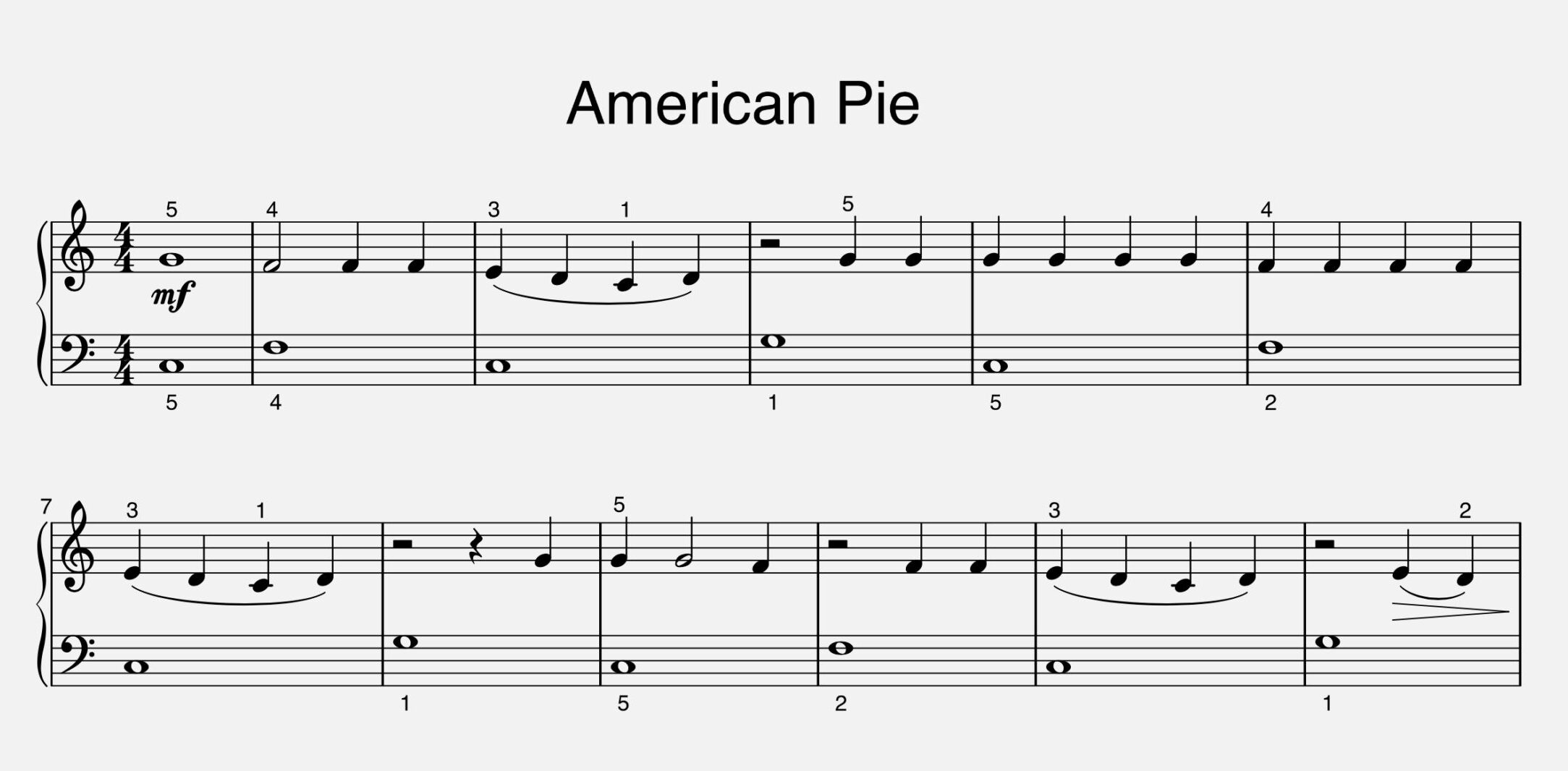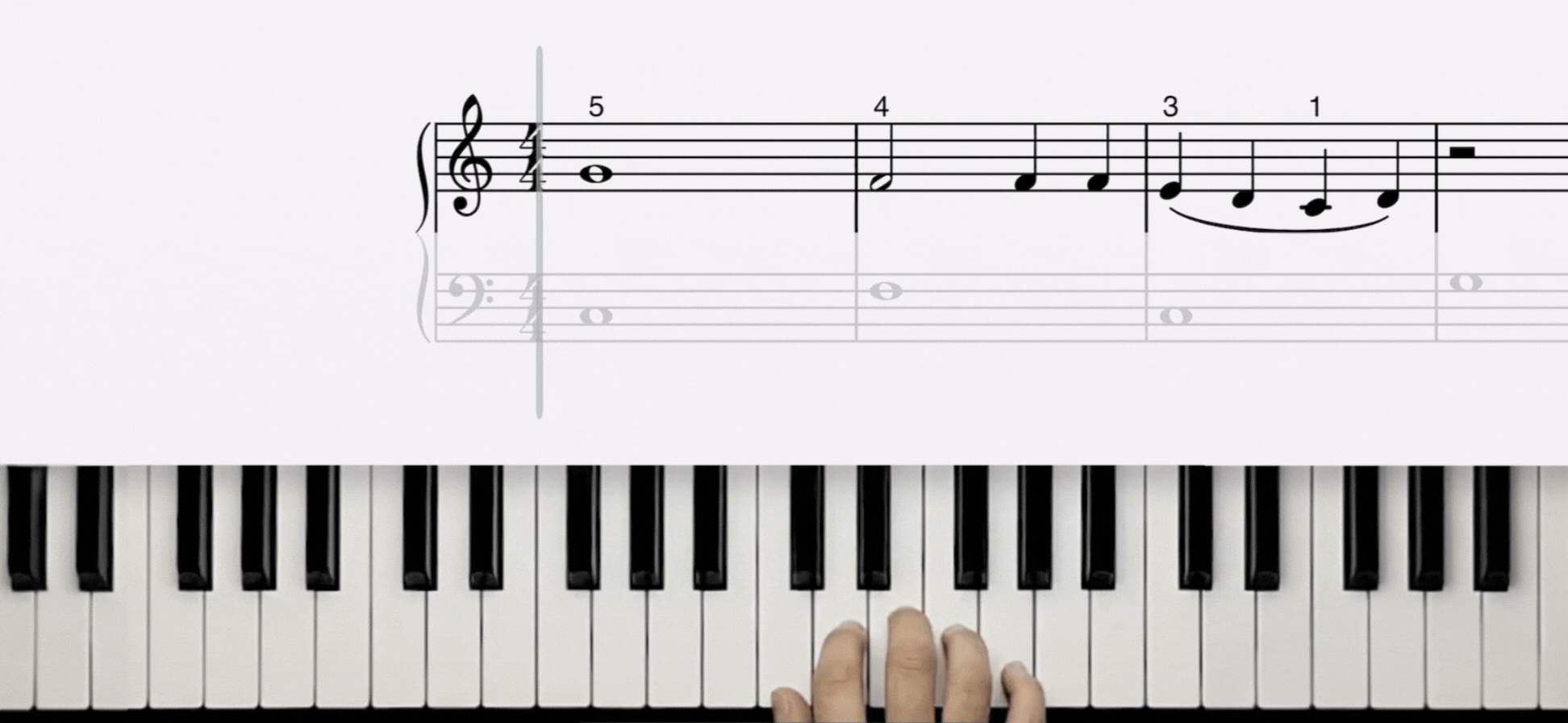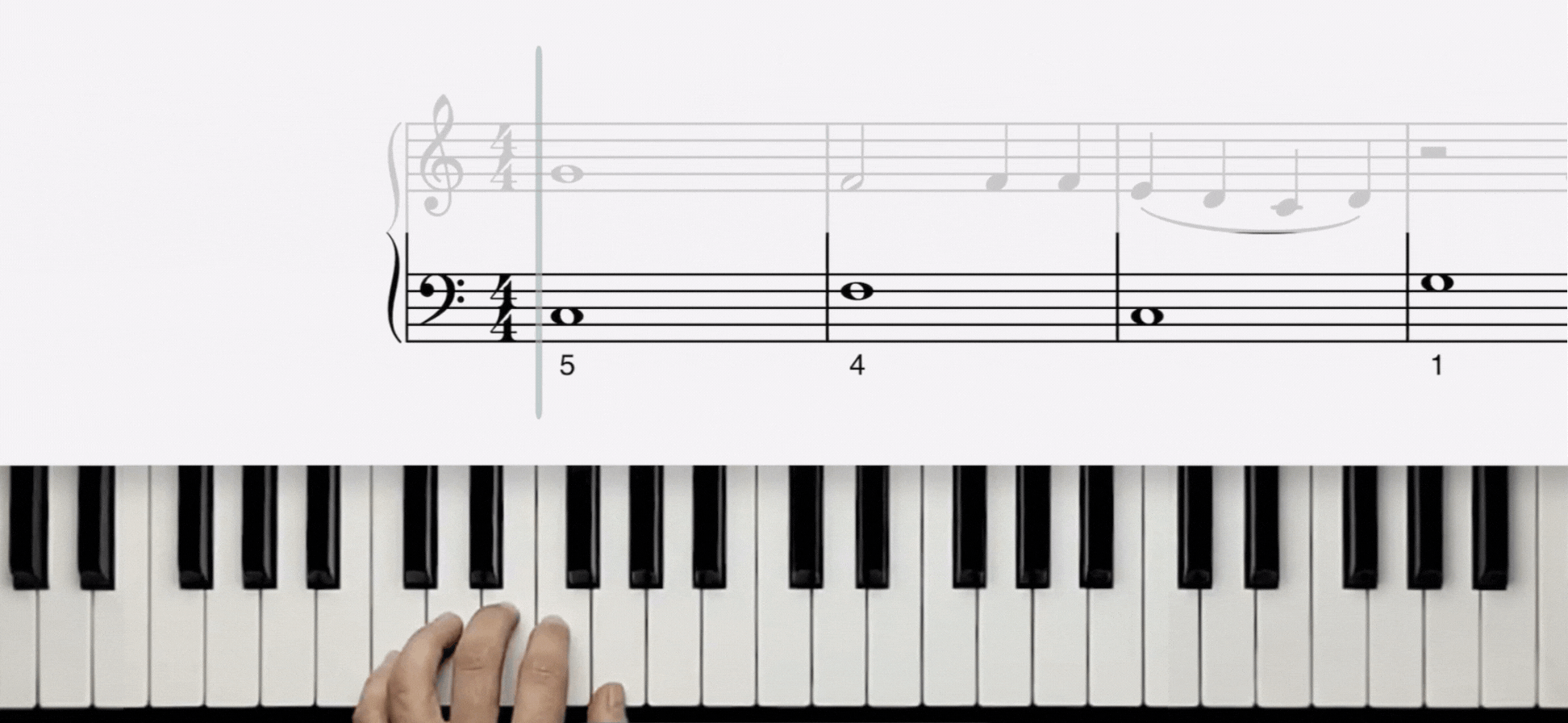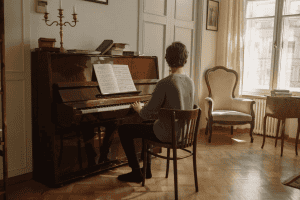
When Don McLean recorded American Pie in 1971, the piano track was played by legendary session musician Paul Griffin. He’d also worked with Bob Dylan and Aretha Franklin and his lively, rolling piano style gave American Pie its unmistakable drive. McLean himself later said that the song really “came together” once Griffin’s piano part was added.
“American Pie” is one of those timeless classics that instantly gets people singing along. If you’ve been wondering how to play “American Pie” on piano, you’re in the right place.
At Skoove, we love guiding beginners and early intermediates through songs that feel rewarding from the very first notes. In this tutorial, you’ll discover the “American Pie” piano notes, chords and step-by-step tips to make the piano song feel enjoyable. Let’s get started!
What are the notes in “American Pie” ?
The great thing about learning “American Pie” piano music is that you don’t need to tackle everything at once. The song naturally divides into two parts: the melody in your right hand and the accompaniment in your left hand.

To keep things simple, we’ll first look at the notes for each hand separately. Once you feel comfortable playing them on their own, we’ll bring them together step by step.
Playing the notes with the right hand
Your right hand carries the famous tune. Start by placing your thumb (finger 1) on middle C and let the rest of your fingers fall naturally on the white keys. This gives you a comfortable hand position for the first notes.
G(5) – F(4) – F(4) – F(4) – F() – E(3) – D(2) – C(1) – D(2)

With just these first notes, you already hear the melody of “American Pie” taking shape. Take it slowly, repeat each phrase a few times and you’ll find the tune feels more natural every day. Once the right hand feels steady, you’ll be ready to bring in the left hand for that full, sing-along sound.
Playing the notes with the left hand
The “American Pie” piano notes in the left hand supports the melody by providing the harmony. In this version we will keep it simple and just play the root notes of the chords. Put your little finger on the C below middle C and let your fingers fall naturally over the keys.
C(5)- F(4)- C(5)- G(1)- C(5)

You can see how the left hand often plays longer notes, giving you time to focus on the moving melody. Keep the bass steady thinking of you 1, 2, 3, 4 pulse as you play.
How to play “American Pie” on piano?
Now that you know the notes for each hand, let’s put them together into a smooth performance. To make this easier, we’ve created a simple “American Pie” piano tutorial you can follow along with. Watching and hearing the song played slowly will help you connect everything. Let’s keep going.
Practice tips for “American Pie” on piano
Learning “American Pie” becomes easier when you practice smart. Here are a few tips to keep you motivated and make steady progress:
- Tackle one verse and chorus at a time – The song repeats the same chord patterns across verses. Once you learn the first verse and chorus, the rest will fall into place quickly.
- Focus on the leap at the beginning – That jump from low D up to high D in the melody can feel tricky. Practice it slowly on its own until it feels natural, then fit it back into the phrase.
- Keep your left hand steady – Your left hand is the anchor. Even if the right-hand melody slips, keep the bass notes (or chords) in time to hold the song together. Think of it as the steady strum of a guitar.
- Sing or count while playing – The lyrics are almost built-in timing guides. If you softly sing along (or just count “1-2-3-4”), it helps you line up the melody with the chord changes.
- Pay attention to articulation – notice how the notes in bar three of the melody are slurred. Be sure to make them more connected and flowing.
- Practice transitions – Spend extra time on the spots where verses move into the chorus. These hand changes are where many beginners stumble, isolating them will save you frustration later.
Ready for your next song?
Congratulations, you’ve just learned how to play “American Pie” on piano. From the first leap in the melody to the steady bass line underneath, you now have all the tools to bring this classic piano song to life at your own keyboard.
If you had fun with this tutorial, why stop here? Inside the Skoove app, you’ll find interactive lessons, real-time feedback and a full library of songs to keep your piano journey exciting. Whether you want to explore more classics, pop hits, or even classical pieces, we’ll be right there with you step by step.
Author of this blog post:
Matthew Dickman

With over a decade of experience in music education Matthew holds a BA in Music from Paul McCartney’s LIPA and an MA in Composition from the University of Salford. Mathew has developed a distinctive compositional voice and approach to music theory education through his research and work in the music industry. Matthew’s writing for Skoove combines experience from orchestral and media composition, and as a gigging jazz musician, to create a wholistic and accessible pedagogy for musicians of any level. Away from music, he enjoys reading and exploring nature to expand his horizons and knowledge contributing to his holistic teaching style.














